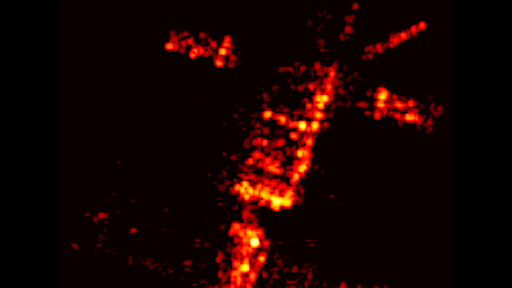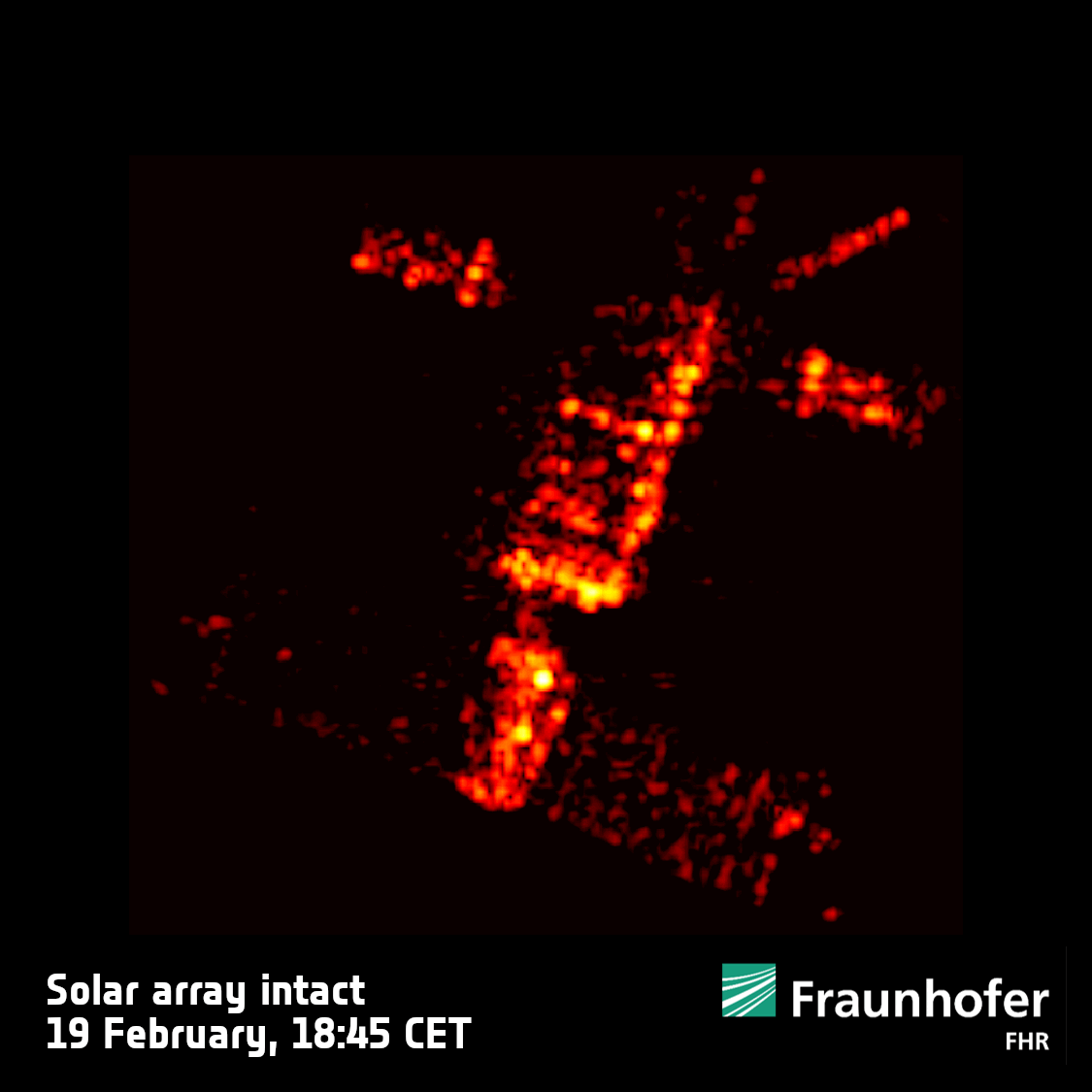Radar images reveal damage on Europe's doomed ERS-2 satellite during final orbits
Images show surprise changes to the spacecraft as it interacted with the atmosphere.

The European Space Agency has released images showing some of the final orbits experienced by a European satellite before its fiery reintroduction to Earth's atmosphere.
The school-bus-sized European Remote Sensing (ERS-2) satellite reentered our planet's atmosphere over the Pacific Ocean on Feb. 21, almost 29 years after its launch in April 1995.
The Tracking and Imaging Radar (TIRA) at the Fraunhofer Institute for High Frequency Physics and Radar Techniques FHR in Germany observed the spacecraft in the days and hours ahead of its demise.
Related: Big, doomed satellite seen from space as it tumbles towards a fiery reentry on Feb. 21 (photos)
Space debris is becoming a bigger and more visible issue as time goes on. The combined radar images from TIRA — in which the color represents radar echo intensity, not temperature — notably show the buckling and bending of one of ERS-2's solar arrays occuring earlier than expected. This could have implications in terms of understanding how spacecraft behave as they reenter the atmosphere.
These are some of the very final images of ERS-2.Captured by @Fraunhofer_FHRe, they show the satellite's solar array buckle and bend under the stress of reentry earlier than expected.This may have caused ERS-2 to interact with the atmosphere in ways we did not expect. pic.twitter.com/Wld5qzMWXtFebruary 26, 2024
"When predicting a satellite's reentry trajectory, experts treat it as one rigid object until almost the very end. If ERS-2's solar array was loose and moving independently a day early, it may have caused the satellite to interact with the atmosphere in ways we did not expect," said an ESA statement.
Precise data regarding the reentry is now being assessed. Of particular interest is whether the buckling of the array was related to the slightly-later-than-predicted reentry sequence. The outcome could help improve forecasts of future natural reentries, according to ESA.
Get the Space.com Newsletter
Breaking space news, the latest updates on rocket launches, skywatching events and more!

ERS-2 made a "natural," or uncontrolled, atmospheric reentry. Its fuel and batteries were depleted to lower the risk of debris-creating explosions in orbit; it was, rather, left to be pulled back to Earth by gravity and atmospheric influence. Space agencies and companies are now moving to controlled reentries, whereby operators deliberately deorbit a spacecraft over sparsely populated areas of Earth such as the South Pacific Ocean.
Join our Space Forums to keep talking space on the latest missions, night sky and more! And if you have a news tip, correction or comment, let us know at: community@space.com.

Andrew is a freelance space journalist with a focus on reporting on China's rapidly growing space sector. He began writing for Space.com in 2019 and writes for SpaceNews, IEEE Spectrum, National Geographic, Sky & Telescope, New Scientist and others. Andrew first caught the space bug when, as a youngster, he saw Voyager images of other worlds in our solar system for the first time. Away from space, Andrew enjoys trail running in the forests of Finland. You can follow him on Twitter @AJ_FI.









